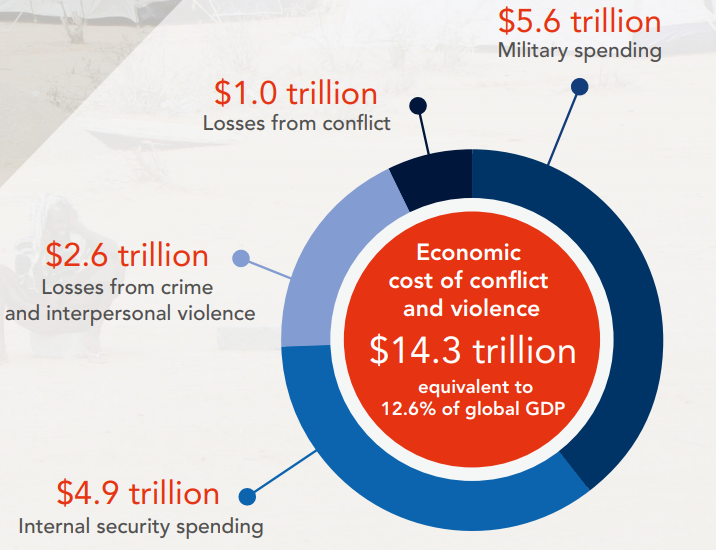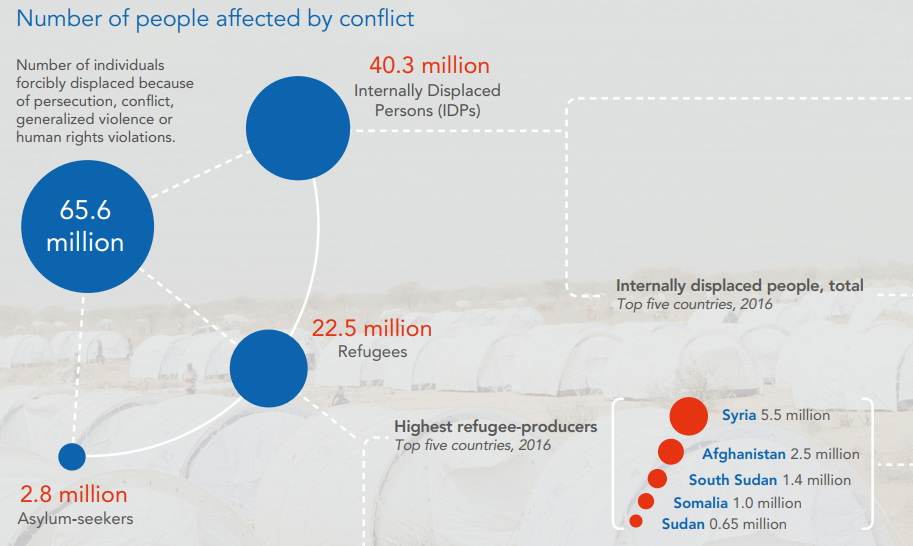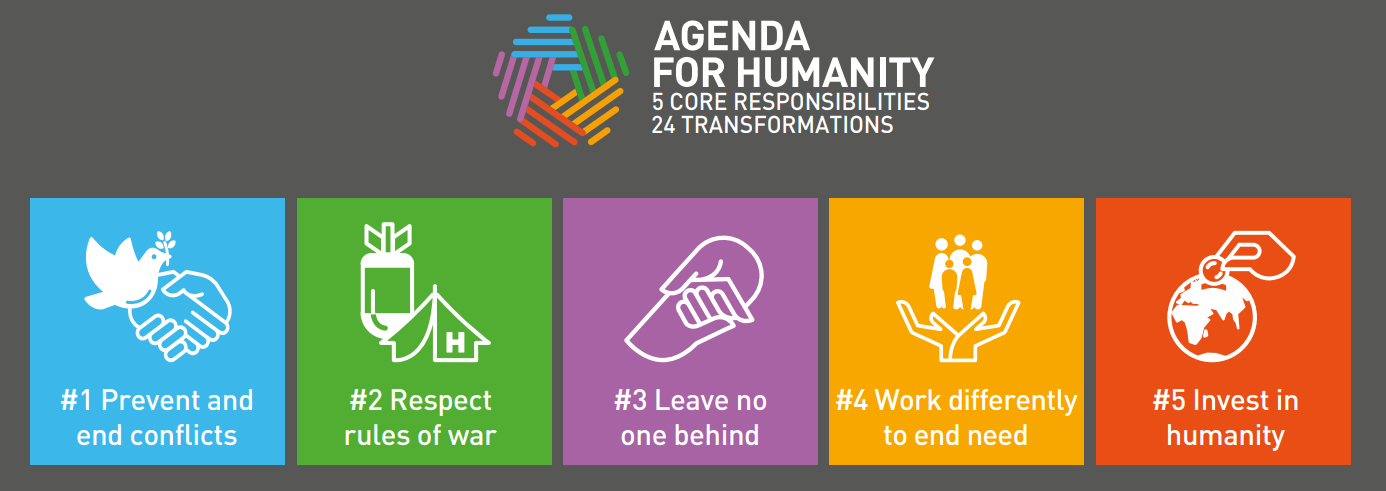World Economic Forum
Conflict Costs the Global Economy $14 Trillion a Year

Source:Shutterstock
In 2015, violence cost the world $13.6 trillion. The following year, it cost a trillion more.
Views
Conflict Costs the Global Economy $14 Trillion a Year
By Rob Smithweb only
The cost of war is staggering. At the end of 2016 an unprecedented 65.6 million people around the world had been forced from their homes – that’s equivalent to the population of the United Kingdom.
But as well as devastating lives, communities and countries, war also has a huge impact on the global economy.
The Institute for Economics and Peace estimates that conflict and violence cost us $13.6 trillion in 2015.
In 2016 the price tag was even higher, at $14.3 trillion, or 12.6% of global GDP, according to the World Humanitarian Data and Trends report by the UN Office for the Coordination of Humanitarian Affairs (OCHA).
Breaking Down the Numbers
Military spending ($5.6 trillion) and internal security ($4.9 trillion) accounted for more than two-thirds of the 2016 cost. Losses from conflict ($1 trillion) and crime and interpersonal violence ($2.6 trillion) made up the remainder.
 Image: World Humanitarian Data and Trends report
Image: World Humanitarian Data and Trends report
Unsurprisingly, as the cost of war increased, so did the number of conflicts.
Globally, there were 278 political conflicts in 2006. Ten years later, the number of political conflicts had risen sharply to 402.
In 2016, 38 crises were deemed “highly violent”, which was five fewer than in 2015, the report says.
 Image: World Humanitarian Data and Trends report
Image: World Humanitarian Data and Trends report
Over the decade, medium-intensity conflicts – or violent crises – experienced the greatest increase, rising from 83 in 2006 to 188 in 2016.
The region recording the greatest increase in conflicts since 2006 and the highest number per year (118 on average) was Asia and Oceania.
 Image: World Humanitarian Data and Trends report
Image: World Humanitarian Data and Trends report
The Human Cost
An additional 300,000 people were displaced by conflict between 2015 and 2016, which pushed up the number of those forced from their homes to a record 65.6 million worldwide.
 Image: World Humanitarian Data and Trends report
Image: World Humanitarian Data and Trends report
In 2016, over 40 million people were internally displaced, another 22.5 million were categorized as refugees and almost 3 million were asylum seekers, the report shows.
Of the conflicts, the ongoing war in Syria has had the most damaging effect, with 6.3 million people displaced within the country. Such is the severity of the Syrian civil war, a further 5.5 million have become refugees – the highest number of any nation.
Aside from Syria, the other countries producing the most refugees between 2015 and 2016 were Afghanistan (2.5 million), South Sudan (1.4 million), Somalia (1.0 million), and Sudan (0.65 million).
During 2016 Turkey took in 2.9 million refugees, many of whom had fled from neighbouring Syria.
Other nations hosting a large proportion of the world’s refugees include Pakistan (1.4 million), Lebanon (1 million), Iran (0.97 million) and Uganda (0.95 million).
Conflict Resolution
To combat these humanitarian crises and improve the lives of millions of people, former UN Secretary-General Ban Ki-Moon put forward a new Agenda for Humanity. The agenda sets out five core responsibilities aimed at reducing humanitarian suffering:
1. “Prevent and end conflicts” includes a call for improved leadership and the need to act early
2. “Respect rules of war” includes protecting civilians and their homes and ensuring the delivery of humanitarian and medical assistance
3. “Leave no one behind” means addressing the issue of displacement and ensuring no one misses out on education during crises
4. “Work differently to end need” includes respecting and strengthening local leadership and capacity, rather than replacing them
5. “Invest in humanity” aims to improve investment in stability and local capacities, as well as calling for the diversification of resources and increased efficiency.
 Image: Agenda for Humanity
Image: Agenda for Humanity
If these responsibilities are delivered, the report says, it would help the UN achieve its 17 Sustainable Development Goals by 2030.
These include ending poverty, protecting the planet, and fostering peaceful, just and inclusive societies that are free from fear and violence.
Additional Reading
♦ The Night Jakarta Burned
♦ The Specter of ‘Illiberal Democracy’
♦ The Shocking Truth: Well-being is Actually Progressing
Original content can be found at the website of World Economic Forum.
♦ Conflict costs the global economy $14 trillion a year
This article is reproduced under the permission of World Economic Forum (WEF) and terms of Creative Commons Attribution-NonCommercial-NoDerivs 4.0 Unported License (“CCPL”). It presents the opinion or perspective of the original author / organization, which does not represent the standpoint of CommonWealth magazine.







